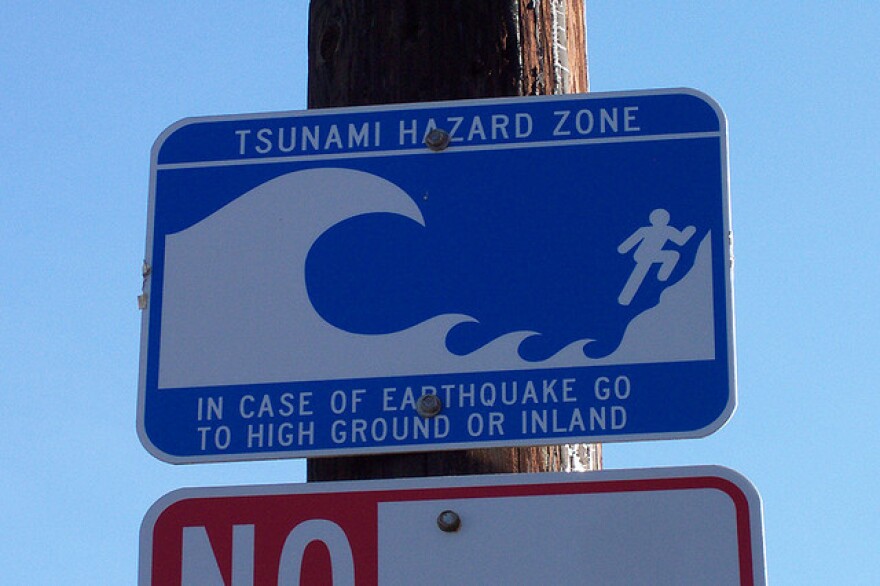Many Alaskans will get a tsunami warning on Wednesday at 10:15 a.m. It’s a test, but the people sending it out are worried that not everyone will know that.
Dave Snider of the National Tsunami Warning Center said that’s because the system used to send out tsunami alerts is outdated and overly complicated.
“We’re operating on a system that is probably closer to where meteorology and weather science was 20, 30 years ago,” he said.
Real tsunami warnings get broadcast on local radio and TV stations and relayed through warning sirens, in places that have them. They also go out through wireless emergency alerts — the kind that can show up on your cellphone’s lock screen, sometimes with an irritating siren noise.
For Wednesday’s test, the cellphone alerts won’t be activated. But Snider said it’s possible that some mobile apps might spread the warning anyway. And due to incompatible software, those third party apps could misread the code that communicates the warning and leave out the part that says it’s a test.
“We do rely on our third party, private industry and enterprise to make sure that they’re keeping up with the changes that we’re making, and making sure that they understand the code that we’re using,” Snider said.
It’s also possible that the warning will reach people outside of the testing zone. That’s because tsunami warnings are issued using weather forecasting boundary zones — the same ones used to issue alerts for weather hazards like winter storm warnings.
Most of the zones cover large areas, and they’re not designed for tsunami warnings. Snider said feedback from tests — like hearing from people outside tsunami zones — is vital to designing a better warning system.
“One of the results of this will be to see, are there places that are getting this alert that shouldn’t get the alert? And we may find a couple of those places,” Snider said. “Because we know in the past, there have been some areas that have been over-warned or over-alerted.”
The warning center runs the annual test each March as part of Tsunami Preparedness Week. It falls around the anniversary of the devastating tsunamis of the Great Alaska Earthquake of 1964.
Those tsunamis are why the center exists in the first place. Decades later, the technology for sending out precise warnings is very much a work in progress. In a report last year, the NOAA science advisory board called for “urgent action” to update the tsunami warning system.
Snider says said that technology could take decades longer — and in the meantime, he expects some errors.
“Twenty years from now, when we’ve redesigned the alert system, it won’t happen,” he said. “It’s a technology thing, and we’re constantly working to refine that and keep people safe.”
Feedback from this week’s test will help to improve things along the way. People in the southern Alaska tsunami zones are encouraged to submit their comments at www.ready.alaska.gov.

